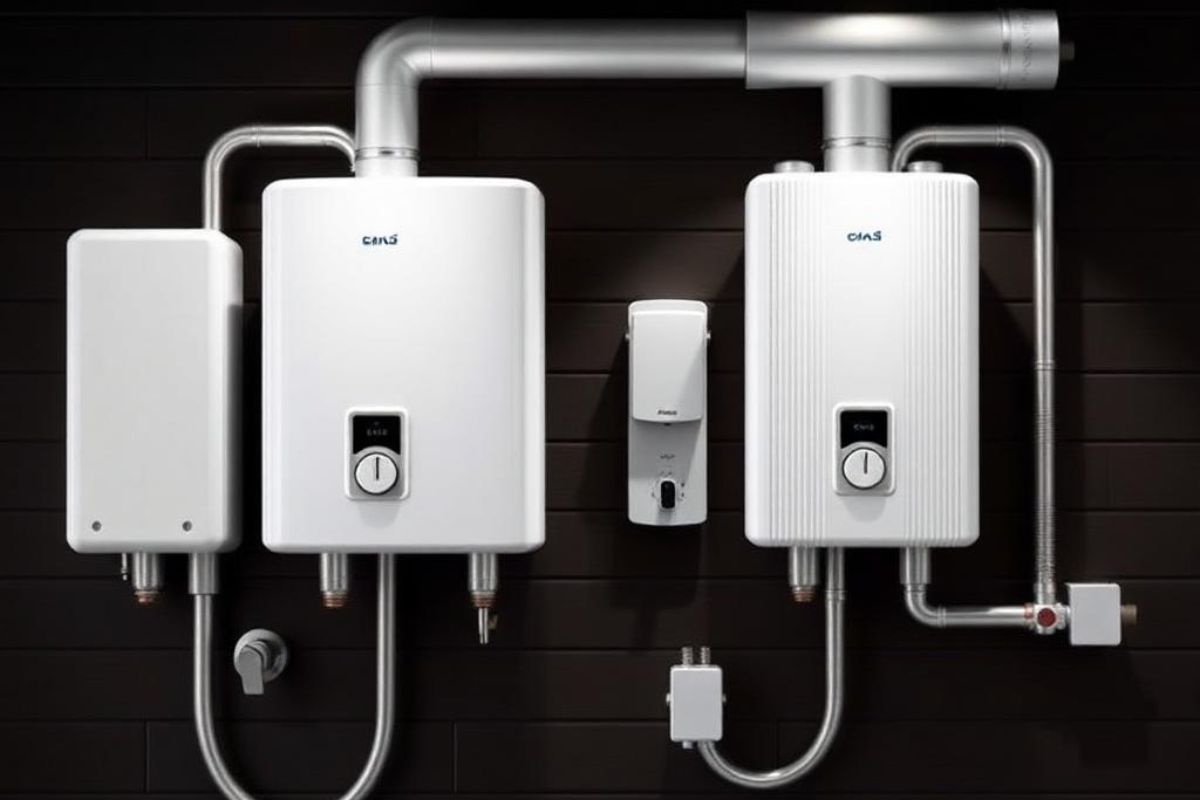Installing a tankless water heater in a tiny home maximizes space and enhances energy efficiency. Unlike traditional water heaters, tankless units heat water on demand, eliminating the need for bulky storage tanks. Benefits include saving energy and enjoying an endless supply of hot water.
If you lack expertise or experience, consult a professional local plumbing company in Orange County for assistance. This article provides a comprehensive guide for those who want to take on the installation themselves.
Tankless Water Heaters Explained
Tankless water heaters, also known as on-demand water heaters, operate differently than traditional units. These systems heat water directly as it flows through the unit, providing hot water instantly. When it comes to tiny homes, choosing the right water heater is essential to ensure efficient space usage and comfort.
Several advantages come with tankless water heaters:
-
Space-Saving Design: Tankless models are compact, freeing up valuable space in small homes.
-
Energy Efficiency: Unlike traditional heaters that maintain a reservoir of hot water, tankless systems only use energy when hot water is needed. This results in lower energy bills.
-
Longer Lifespan: With proper maintenance, tankless water heaters can last up to 20 years, significantly longer than tank-based models.
When selecting a tankless water heater, consider factors such as flow rate, fuel type (gas or electric), and your home’s hot water needs.

Tools and Materials Needed
Before starting the installation, gather the necessary tools and materials. Having everything on hand streamlines the process and minimizes interruptions.
Tools:
-
Adjustable wrench: For tightening connections
-
Screwdrivers (flathead and Phillips): For securing the unit and connections
-
Drill with bits: For making holes for mounting
-
Pipe cutter: To cut water lines to the correct length
-
Teflon tape: To seal threaded connections and prevent leaks
-
Measuring tape: For precise measurements during installation
-
Level: To ensure the unit is mounted correctly
Materials:
-
Tankless water heater unit: Choose a model suitable for your needs.
-
Cold and hot water piping: Use copper, PEX, or PVC based on local codes and preferences.
-
Water fittings and connectors: Ensure compatibility with your piping materials.
-
Venting system (for gas units): Proper exhaust of combustion gases is essential.
-
Electrical supplies (for electric units): You need cables, connectors, and breakers, as per local codes.
Ensure you have all tools and materials before beginning the installation to avoid delays and interruptions.
Step-by-Step Installation Process
Follow these steps to install your tankless water heater. Each step requires attention to detail for successful installation.

Preparation
Start the process by turning off the water supply and power to the existing water heater. If replacing a traditional unit, drain the old tank before removing it. Make sure to disconnect any existing water lines and electrical or gas connections.
Choosing the Location
Select a suitable location for the tankless water heater. Keep accessibility in mind for maintenance and repairs. Ensure the area meets the manufacturer's requirements for ventilation, especially for gas units. Consider proximity to the most frequently used hot water outlets for optimal efficiency.
Mounting the Heater
Install the wall mount bracket according to the manufacturer's instructions. Use a level to ensure the heater hangs straight. Secure the unit to the wall with appropriate fasteners, ensuring it can support the heater’s weight and any water lines.
Connecting Water Lines
Connect the cold water inlet and hot water outlet. Use the correct fittings for your chosen piping material. Apply Teflon tape to threaded connections to prevent leaks. Secure connections firmly, ensuring there are no leaks when the system is pressurized.
Connecting the Power Supply
-
For Electric Models: Connect the heater to the electrical panel, ensuring adherence to local electrical codes. Use appropriately sized wires and breakers for the heater’s electrical requirements.
-
For Gas Models: Connect the unit to the gas line, taking care to install the venting system properly. Follow manufacturer guidelines and local codes to ensure safe and effective operation.
Testing the System
Once all connections are secure, turn on the water supply and power to the unit. Check for leaks at all connections. Open a hot water faucet to allow air to escape from the system. Monitor the heater to ensure it operates correctly. Look for any unusual sounds or error codes during this initial test.
If any issues arise during installation or testing, contact a professional plumbing company for assistance. They can troubleshoot any problems and ensure everything operates safely and efficiently.
Tips for Maintenance and Troubleshooting
Proper maintenance ensures your tankless water heater operates efficiently for years. Follow these tips to prolong its lifespan and maintain optimal performance:
-
Regular Descaling: Hard water buildup can affect performance. De-scale your heater at least once a year using a vinegar solution or a commercial descaling product. This prevents mineral buildup that can clog the system and reduce efficiency.
-
Check Filters: Inspect and clean the inlet water filter regularly to maintain proper water flow and prevent clogs. Clean or replace filters as recommended by the manufacturer.
-
Monitor Temperature Settings: Keep the temperature set to 120°F to prevent scalding and save energy. This temperature is safe for most household uses while maintaining efficiency.
-
Inspect Venting: Ensure the venting system remains clear and unobstructed for gas units. Regular checks can prevent dangerous gas leaks and ensure efficient exhaust of combustion gases.
If you encounter problems, refer to the user manual for troubleshooting tips. Common issues include inconsistent water temperature, low flow rate, and error codes on the display. For persistent problems, consult a plumbing professional for specialized advice and support.

Contact SoCal Plumbing & Rooter Today
Installing a tankless water heater in your tiny home offers numerous benefits, including energy efficiency and space savings. Following the outlined steps and using the proper tools enables the successful completion of the installation. Remember to prioritize maintenance to extend the lifespan of your unit.
For assistance or if complications arise during installation, contact a professional local plumbing company. Get valuable insights and support for any installation or maintenance needs, ensuring your home enjoys an efficient hot water supply for years to come.






Share: